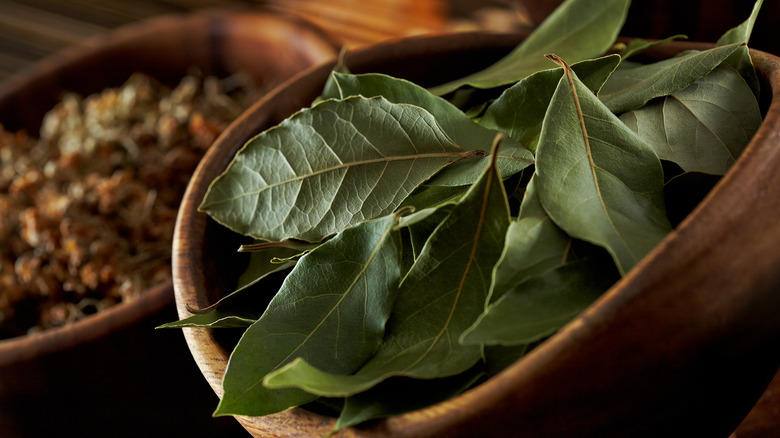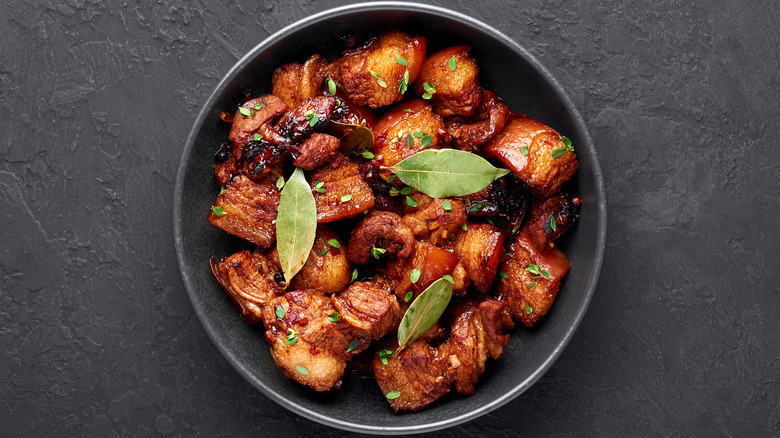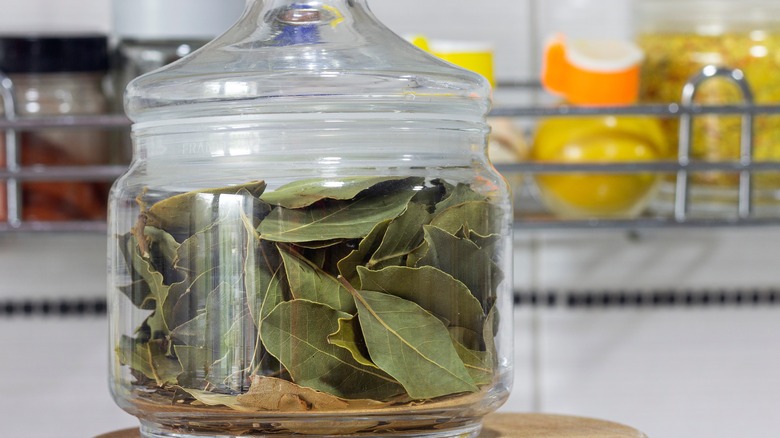What Do Bay Leaves Actually Taste Like?
Some herbs are stars of the show, like parsley or cilantro. They impart bright, clean flavors to any dish. Bay leaves, however, always seem to take a background role. If cilantro is a movie star mugging for the camera, then bay leaves are a character actor; they're just doing what the scene needs and blending in. But that doesn't mean that bay leaves don't have a complex, important flavor all their own.
There are several kinds of bay leaves with their own flavors. The most commonly used variety in America tend to be dried options that are imported from Turkey that have a much milder flavor than fresh bay leaves. When added to a dish, they initially impart a minty, eucalyptus flavor. Over time, however, they take on more well-rounded tasting notes that can resemble tea. This helps them cut through the heaviness of hearty stews, for example.
Fresh bay leaves, on the other hand, are usually from California, and they will leave a much stronger impact on a dish. Unless something specifically calls for fresh bay leaves, this is the rare instance where the dried herb is preferable to the fresh option since fresh bay leaves pack a serious eucalyptus flavor that can overpower the other ingredients.
How to cook and taste test bay leaves
Bay leaves are commonly added to a cooking liquid to simmer and impart flavor, but are rarely eaten themselves. Their sharp, fibrous texture makes them difficult and unpleasant to digest. For this reason, it's ideal to remove bay leaves from a dish before serving (unless you want to use them as a decorative accent).
It's also important to cook bay leaves for a long period of time so their complex flavors can fully develop; it's why they're popular in slow-cooked dishes such as chicken noodle soup. Just be sure to add the herb when you first start simmering your dish. When used correctly, like in a recipe for Guinness braised short ribs, bay leaves will also balance the fatty flavors of deeply braised meat.
Some people can be skeptical of how much flavor bay leaves really have. To find out for yourself, try this simple task. Simmer a few in a pot of water for about an hour, and then taste the liquid. This will give you a blank canvas that allows you to identify their taste.
More great uses for bay leaves
Bay leaves are a versatile herb with many applications outside of cooking, too. For one, they can be used as an air freshener; they contain ecaulyptol, a compound often found in commercially available air fresheners.
To use the leaves in this way, try putting a few on your radiator or in front of a heat source. As the leaves warm up, they'll release a pleasant, minty smell into the air. You can also treat them like incense by lightly burning them to release a more intense, smoky scent. You can even simmer bay leaves with other herbs and spices to create a stovetop potpourri. All of these methods will infuse your home with a pleasant aroma.
As well, you can use bay leaves to protect your pantry since they are a natural insect repellent. Scatter leaves throughout your cupboard, or directly inside dry goods containers, to keep pantry moths and other insects away.



